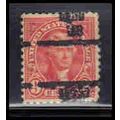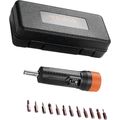Dundee - Tay Bridge - postcard by GD & DL - c.1905-10
- Condition : Used
- Dispatch : 2 Days
- Brand : None
- ID# : 182680501
- Quantity : 1 item
- Views : 116
- Location : United Kingdom

- Seller : justthebook (+1704)
- Barcode : None
- Start : Wed 19 Jun 2019 17:49:22 (EDT)
- Close : Run Until Sold
- Remain : Run Until Sold
Checks/Cheques
 for 1 item(s) edit
for 1 item(s) edit
Shipping Calculator
More Listings from This Seller view all
Seller's Description
- Postcard
- Picture / Image: Tay Bridge [Dundee]
- Publisher: GD & DL
- Postally used: no
- Stamp: n/a
- Postmark(s): n/a
- Sent to: n/a
- Notes / condition:
Please ask if you need any other information and I will do the best I can to answer.
Image may be low res for illustrative purposes - if you need a higher definition image then please contact me and I may be able to send one. No cards have been trimmed (unless stated).
------------------------------------------------
Postage & Packing:
Postage and packing charge should be showing for your location (contact if not sure).
No additional charges for more than one postcard. You can buy as many postcards from me as you like and you will just pay the fee above once. Please wait for combined invoice. (If buying postcards with other things such as books, please contact or wait for invoice before paying).
Payment Methods:
UK - PayPal, Cheque (from UK bank) or postal order
Outside UK: PayPal ONLY (unless otherwise stated) please. NO non-UK currency checks or money orders (sorry).
NOTE: All postcards are sent in brand new stiffened envelopes which I have bought for the task. These are specially made to protect postcards and you may be able to re-use them. In addition there are other costs to sending so the above charge is not just for the stamp!
I will give a full refund if you are not fully satisfied with the postcard.
----------------------------------------------
Text from the free encyclopedia WIKIPEDIA may appear below to give a little background information (internal links may not work) :
*************
The Tay Bridge carries the main-line railway across the Firth of Tay in Scotland, between the city of Dundee and the suburb of Wormit in Fife. Its span is 2.75 miles (3.5 kilometres).
The present structure is the second one on its site.
From about 1854, there had been plans for a Tay crossing, to replace an early train-ferry. The first bridge, opened in 1878, was a single-track lattice design, notable for lightness and low cost. Its sudden collapse in a high wind on 28 December 1879 was one of the great engineering disasters of history, and its causes are still debated today.
The second bridge was a double-track construction of iron and steel, opened in 1887 and still in service. In 2003, a strengthening and refurbishing project was recognised by a major award for the scale and difficulty of the work.
The original Tay Bridge was designed by noted railway engineer Thomas Bouch, who received a knighthood following the bridge's completion.[1] It was a lattice-grid design, combining cast and wrought iron. The design was well known, having been used first by Kennard in the Crumlin Viaduct in South Wales in 1858, following the innovative use of cast iron in The Crystal Palace. However, the Crystal Palace was not as heavily loaded as a railway bridge. A previous cast iron design, the Dee bridge which collapsed in 1847, failed due to poor use of cast-iron girders. Later, Gustave Eiffel used a similar design to create several large viaducts in the Massif Central (1867).
Proposals for constructing a bridge across the Tay date back to at least 1854. The North British Railway (Tay Bridge) Act received the Royal Assent on 15 July 1870 and the foundation stone was laid on 22 July 1871.
The original design was for lattice girders supported by brick piers resting on bedrock shown by trial borings to lie at no great depth under the river. At either end of the bridge the single rail track ran on top of the bridge girder, most of which therefore lay below the pier tops. In the centre section of the bridge (the “high girders”) the railway ran inside the bridge girder, which could then run above the pier tops to give the required clearance to allow passage of sailing ships upriver (e.g. to Perth). To accommodate thermal expansion there were few rigid connections between girders and piers.
As the bridge extended out into the river, it became clear (December 1873[2]) that the bedrock really lay much deeper; too deep to act as a foundation for the bridge piers. Bouch redesigned it quickly to reduce the number of piers and correspondingly increase the span of the girders. The pier foundations were no longer taken down to bedrock; instead they were constructed by sinking brick-lined wrought-iron caissons onto the riverbed, removing sand until the caissons rested upon the consolidated gravel layer which had been misreported as rock, and then filling the caissons with concrete.[3] To reduce the weight the ground under the caissons would have to support, the brick piers were replaced by open lattice iron skeleton piers (each pier had multiple cast-iron columns taking the weight of the bridging girders, with wrought iron horizontal braces and diagonal tiebars linking the columns of the pier to give rigidity and stability). The basic concept was well known, having been used first by Kennard in the Crumlin Viaduct in South Wales in 1858;[4] Bouch had used it for viaducts (notably the Belah Viaduct (1860)) on the South Durham & Lancashire Union Railway line over Stainmore, but for the Tay Bridge, even with the largest practicable caissons the pier dimensions were significantly constrained by the caisson. Bouch’s pier design set 6 columns in a hexagon; this maximised the pier width but not the amount of diagonal bracing directly resisting sideways forces.
Listing Information
| Listing Type | Gallery Listing |
| Listing ID# | 182680501 |
| Start Time | Wed 19 Jun 2019 17:49:22 (EDT) |
| Close Time | Run Until Sold |
| Starting Bid | Fixed Price (no bidding) |
| Item Condition | Used |
| Bids | 0 |
| Views | 116 |
| Dispatch Time | 2 Days |
| Quantity | 1 |
| Location | United Kingdom |
| Auto Extend | No |




















